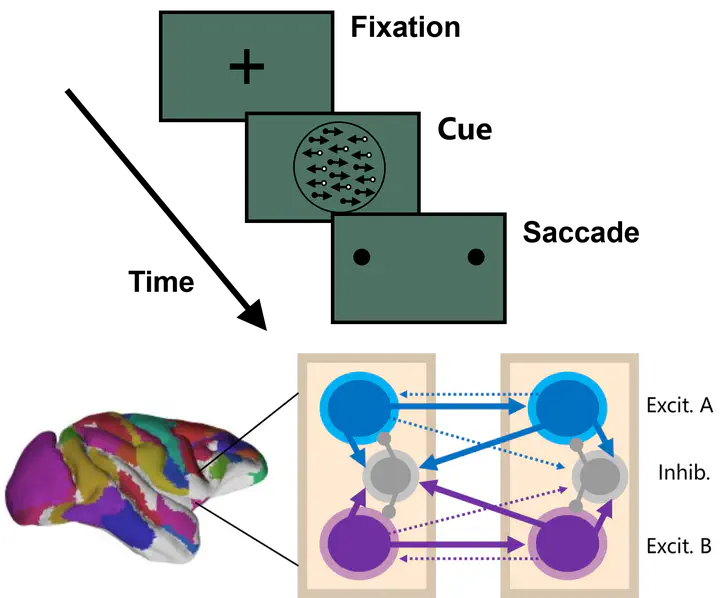A distributed neocortical model on decision-making (DM).
 Photo by Toa Heftiba on Unsplash
Photo by Toa Heftiba on UnsplashDespite the traditional view of parietal cortex as an important region for perceptual decision-making, recent evidence suggests that sensory accumulation occurs simultaneously across many cortical regions. We explored this hypothesis by integrating connectivity, cellular and receptor density datasets and building a large-scale macaque brain model able to integrate conflicting sensory signals and perform a decision-making task. Our results reveal sensory evidence accumulation supported by a distributed network of temporal, parietal and frontal regions, with flexible sequential decision pathways which depend on task difficulty. The model replicates experimental lesioning effects and reveals that the causal irrelevance of parietal areas like LIP for decision performance is explained by compensatory mechanisms within a distributed integration process. The model also reproduces observed temporal gating effects of distractor timing during and after the integration process. Overall, our work hints at perceptual integration during decision-making as a broad distributed phenomenon and provides multiple testable predictions.